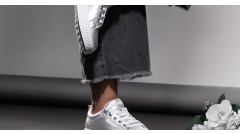Welcome to your essential guide on caring for your Indian feather headdress! This exquisite piece of art is not just a symbol of heritage but also a stunning accessory that deserves the utmost care. Whether it's a cherished heirloom or a newfound treasure, learning how to maintain its beauty will ensure it remains a striking part of your collection for years to come.
In this guide, we’ll explore practical maintenance tips that are easy to follow and incredibly effective. From cleaning techniques to storage suggestions, every step is designed to help preserve the vibrancy and integrity of your headdress. Let’s embark on this journey of preservation together, celebrating the craftsmanship and culture behind this beautiful artifact!
The Indian feather headdress is a remarkable piece of cultural heritage that embodies the artistry and spiritual significance of indigenous traditions. These headdresses are often adorned with vibrant feathers, beads, and intricate designs, each representing a unique story or significance. Caring for such a treasured item requires specific techniques that ensure its beauty and integrity are maintained, making guides like this essential for enthusiasts and collectors alike.
Cleaning Techniques
Caring for your Indian feather headdress requires a gentle touch to preserve the delicate materials and craftsmanship. Start with a soft brush, such as a clean, dry paintbrush or a lint-free cloth. Using this tool, carefully remove any dust or debris from the feathers and fabric. This process is crucial, as build-up can dull the vibrancy of the feathers and lead to additional wear over time. Make sure to brush in the direction of the feathers to avoid damaging their structure.
In cases of stains, it is essential to proceed with caution. Dampen a clean cloth with a mixture of mild soap and water, ensuring the cloth is not soaking wet. Lightly dab at the stained area instead of rubbing, which can harm the feathers. After treating the stain, allow your headdress to air dry away from direct sunlight or heat sources, as these can warp colors and shapes. For tough stains, consider seeking the expertise of a professional who specializes in textile or feather care.
- Always handle your headdress with clean hands to avoid transferring oils or dirt.
- Store the headdress in a cool, dry place away from direct sunlight to maintain its integrity.
Storage Recommendations
Caring for your Indian Feather Headdress is an essential part of maintaining its beauty and integrity. When not in use, storing your headdress properly can prevent damage and preserve its stunning features. One of the best practices is to utilize a dust bag specifically designed for delicate items. This protective covering helps safeguard against dust accumulation and prevents unnecessary wear. When opting for a display case, choose one that allows for visibility while offering a dust-free environment. Ensure the case is spacious enough to accommodate the headdress without crushing it, allowing the feathers and materials to maintain their shape.
Consider the following tips for optimal storage:
- Keep the headdress in a cool, dry place away from direct sunlight to avoid fading and heat damage.
- Avoid placing heavy items on top of the headdress or its storage bag to prevent crushing and deformation.
- Make sure the feathers are not packed tightly against each other; instead, arrange them gently to maintain their natural shape.
- Periodically check the condition of the headdress during storage to monitor for any signs of damage or wear.
Handling Guidelines
Caring for your Indian Feather Headdress requires gentle and thoughtful handling to preserve its delicate feathers and intricate design. When lifting the headdress, always approach it with clean hands; dirt and oils can contribute to damage over time. Use both hands to pick it up by the base or the frame, avoiding the feathers to prevent bending or breaking them. It's best to hold the headdress by the sides or use a support structure to ensure it retains its shape. When wearing the headdress, ensure that your hair is neatly styled and that the headdress is adjusted to fit comfortably without excessive pressure on your head or the feathers themselves. When putting it on, position it gently without forcing it into place. Upon removal, do so carefully and consider using both hands to support it in a stable position, minimizing any sudden movements. Following these guidelines will not only help maintain the headdress's shape but will also extend its lifespan considerably.
- Avoid wearing the headdress in windy or rainy conditions to prevent damage.
- If possible, store your headdress in a dust-free environment, such as a display case or cloth bag.
Dealing with Damage
Damage to your Indian Feather Headdress can be upsetting, but it's essential to act quickly to mitigate further issues. Start by carefully assessing the extent of the damage. Look for any crushed feathers, loose adornments, or broken components. Gently run your fingers through the feathers to identify any frayed edges or loosened strands. If there are any visible tears in the fabric or material of the band, take a closer look to determine whether they can be repaired with simple methods or if they’ll require professional assistance.
Temporary fixes can be invaluable during the initial assessment. For crushed feathers, use a hairdryer on a low setting to gently fluff them back into shape. If some feathers are loose, a drop of fabric glue can secure them in place — just be sure it is suitable for use with the materials of your headdress. For any torn sections, fabric patches can serve as a quick remedy until a proper fix is made. Be cautious with adhesives; always test on a small, inconspicuous area first. When the damage appears beyond your repair skills or requires extensive restoration, it’s wise to consult a professional who specializes in restoring such cultural artifacts.
- Keep your headdress stored properly to prevent future damage.
- Regularly inspect for any signs of wear and tear.
- Avoid exposing your headdress to moisture or extreme heat.
Avoiding Environmental Harm
Caring for your Indian Feather Headdress involves being vigilant about its environment. Sunlight is a significant factor that can cause fading and damage to the natural materials, especially the feathers and fabrics used. Prolonged exposure to direct sunlight can weaken these components, leading to a loss of color and structural integrity. Store your headdress in a dark, dry place to mitigate these effects, ideally in a protective case or wrapped in a soft cloth. Choosing a display area away from windows or bright artificial lights can also help preserve its beauty.
Humidity and heat are additional environmental challenges that can negatively impact your headdress. High humidity can encourage the growth of mold and mildew, especially if the headdress is made from natural fibers or feathers. Aim to keep the environment's humidity level below 50%. Consider using silica gel packets in the storage area to absorb excess moisture. As for heat, avoid placing the headdress near radiators, heaters, or in areas where direct heat sources are prevalent. Temperature fluctuations can lead to brittleness, causing feathers and other materials to crack or break. Providing a stable and moderate climate is essential for keeping your headdress in pristine condition.
- Store in a dark, dry place.
- Avoid direct sunlight exposure by choosing a shaded storage area.
- Maintain humidity levels below 50%.
- Use silica gel packets to manage moisture.
- Avoid proximity to heat sources to prevent brittleness.
Restoration Techniques
Caring for your Indian Feather Headdress requires attention to its unique materials and intricate designs. When restoring the appearance of a faded or worn headdress, it’s essential to use non-toxic materials to ensure the preservation of its integrity and authenticity. Start with feather revitalization by gently washing them with a soft brush and mild soap mixed with water. This technique helps remove dust and grime while reviving the natural colors. Rinse lightly and avoid soaking the feathers as excess moisture can lead to additional wear.
For reshaping bent feathers, carefully steam them using a handheld steamer at a safe distance. Maintain an adequate distance to prevent scorching. Once steamed, gently reshape them with your fingers, allowing them to cool in the desired form. For refreshing colors, consider using fabric-safe dyes specifically designated for natural materials. Apply in small amounts and test on a hidden section before full application. Always follow product instructions diligently to achieve the best results without damage.
- Use a soft-bristled brush to gently clean feathers.
- Mix mild soap with water for cleaning, ensuring it’s gentle on materials.
- Utilize fabric-safe dyes if colors appear too dull.
- Employ steaming for reshaping without causing damage.
- Test any restorative materials on a hidden area first.
Regular Maintenance
Caring for your Indian Feather Headdress is essential to preserving its beauty and cultural significance. Regular maintenance not only enhances its appearance but also ensures the longevity of this unique piece of artistry. Establishing a routine is key, and it helps to set a schedule to keep your headdress in prime condition. A good practice is to inspect and clean your headdress biweekly, with a more thorough examination each month.
During your biweekly maintenance, gently remove any dust or dirt by using a soft brush or a lint roller to preserve the feathers' integrity. Pay attention to the beads and other embellishments, ensuring they are secure and free from grime. For monthly inspections, take the time to examine the stitching and base materials. Look for signs of wear or damage, and address any issues immediately. Here’s a useful checklist to follow:
- Use a soft brush for dust removal every two weeks.
- Check for any loose feathers or beads; secure them as needed.
- Inspect the stitching and structure during your monthly check.
- Store the headdress in a cool, dry place to avoid moisture damage.
- Keep it out of direct sunlight to prevent fading.
Implementing this routine will help maintain the vibrancy and cultural richness of your Indian Feather Headdress.
Related Products
Preventing Pests
Caring for your Indian Feather Headdress is vital not only for preserving its beauty but also for ensuring its longevity. One of the most significant threats to this exquisite adornment comes from pests, particularly moths. These tiny nuisances are attracted to natural fibers, which are often found in the traditional materials of the headdress. Moths lay eggs that hatch into larvae, which can feast on your headdress, causing irrevocable damage. By taking proactive measures, you can keep these pests at bay.
Appropriate storage plays an essential role in pest prevention. When not in use, store your Indian Feather Headdress in a cool, dry place, away from direct sunlight. Utilize airtight containers or acid-free tissue paper to wrap the headdress, ensuring that it is protected from both dust and insects. Incorporating natural repellents can also deter pests from settling in. Consider placing cedar chips or lavender sachets within the storage area, as these natural options are known to repel moths. Regularly inspect your headdress for any signs of damage or pest activity, and clean it gently to remove any remnants of food or materials that could attract pests.
- Use airtight containers for storage.
- Opt for natural repellents like cedar chips or lavender sachets.
- Inspect regularly for any signs of pest activity.
- Keep the headdress in a cool, dry place.
Transport Instructions
When it comes to traveling with your Indian Feather Headdress, thorough care and attention are essential to ensure the integrity of the delicate feathers and unique craftsmanship. Begin by selecting a sturdy and padded carrying case. Look for a box or fabric bag that provides ample cushioning to protect against impacts during transit. Avoid using regular suitcases where your headdress could be crushed or bent. An appropriately sized, rigid container will keep your headdress secure and shield it from environmental factors.
Before packing, gently clean your headdress by dusting off any loose feathers using a soft brush. This step is crucial, as it prevents dirt from embedding during transit. When you're ready to pack, do the following:
- Lay the headdress flat within the case, ensuring that the feathers do not bend or touch the sides of the box.
- Utilize soft materials like bubble wrap or tissue paper to cushion the feathers. Wrap them gently while maintaining their shape.
- If your headdress has specific embellishments (like beads or sequins), wrap these items separately to prevent them from snagging.
- Seal the box securely, but avoid pressing down too much on the headdress to preserve its shape.
- Label the box clearly as “Fragile” on all sides to alert handlers that the contents require special attention.
- Whenever possible, carry the headdress on board during flights instead of checking it in, which reduces the risk of damage.
For added protection during car trips or other modes of transport, consider placing the headdress in a dedicated, padded backpack. This way, the headdress can remain upright, minimizing the risk of any awkward pressure on the feathers. Always ensure that your selected transport method considers the headdress’s unique aspects, allowing for a smooth and worry-free travel experience.
- Store the headdress away from direct sunlight and high temperatures while traveling to prevent fading and warping.
- Avoid excessive movement or jostling during transportation, securing it as needed to maintain stability.
Displaying Your Headdress
Displaying your Indian Feather Headdress is not just about aesthetics; it’s also crucial for its preservation. Choosing the right display method can protect it from damage while ensuring it remains a stunning centerpiece in your home. A sturdy display stand is essential. Consider investing in a high-quality wooden or metal stand specifically designed for headdresses. These stands provide not only stability but also elevated visibility to showcase the beauty of the feathers and craftsmanship. Look for stands that have a soft padding at the base to prevent scratches or wear on the headdress.
For those who prefer a more enclosed option, a display case is ideal. Opt for a glass case that offers visibility from all angles while safeguarding the headdress from dust and moisture. UV-protective glass is a wise choice as it helps prevent fading from sunlight exposure. Ensure the case has ample ventilation to avoid humidity buildup, which could damage the feathers and materials. You may also want to use acid-free tissue paper to gently support the headdress inside the case. This helps maintain its shape and prevent any unwanted creasing or crushing over time.
- Choose a display stand made of wood or metal for stability.
- Look for glass display cases with UV protection.
- Use acid-free tissue paper for added support.
Why We Chose This Product
As you wrap up this guide, it’s clear why caring for your Indian feather headdress is crucial. Each feather tells a story, representing tradition, spirituality, and artistry. By investing time and dedication into its upkeep, you honor the history and craftsmanship that went into creating such a magnificent piece.
- It enhances the headdress's visual appeal.
- Prevents damage from environmental factors.
- Ensures longevity, allowing future generations to appreciate it.
Choosing to prioritize the care of your headdress means you're not just maintaining an object; you're preserving a vital part of cultural identity and personal history. Treat it with respect and love, and watch it shine brighter through the years.
The Indian feather headdress is a remarkable piece of cultural heritage that embodies the artistry and spiritual significance of indigenous traditions. These headdresses are often adorned with vibrant feathers, beads, and intricate designs, each representing a unique story or significance. Caring for such a treasured item requires specific techniques that ensure its beauty and integrity are maintained, making guides like this essential for enthusiasts and collectors alike.










